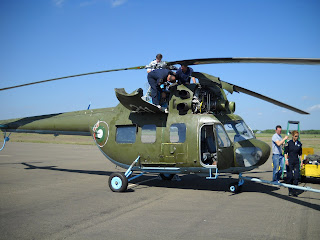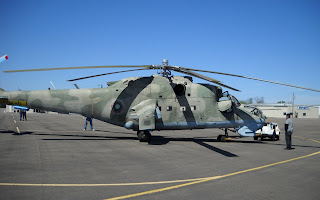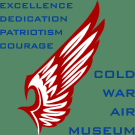In the movies, Indiana Jones has a common theme that runs through his adventures. "Snakes!" he says with a mix of angst and disgust, "Why does it
always have to be snakes?!"
While adventures at the museum are infinitely
2 more mundane, I seem to have developed a similar lament. "Hydraulic Fluid!" I seem to be constantly saying, "Why does it
always have to be hydraulic fluid?!" Whether it's sumping struts, messing with the mule, or showering in it when changing filters, it seems like this slippery, red, sweet-smelling juice is always the rain on my parade.
Getting an
L-39 ready for its annual inspection requires getting it up on jacks. I could have predicted that wasn't going to go as planned. I pumped one of the jacks right and it went up a little... then I pumped it left and it went back down. Do what? What's to go wrong with a jack? Well, it turns out not much... but just enough to get me and the hangar floor covered in hydraulic fluid.
The valves on the jack are a typical Eastern Bloc design. Simple, ingenious, rugged, and made with as much off-the shelf components as possible. In this case, a small bearing (i.e. a readily available, precisely-made component) sits on top of a valve seat, a little cap sits on top of that, and it's all held down with a spring.

Except in this case, rough handling of the jack had gotten the cap/bearing/spring mechanism all cattywhompus. Fixing it meant draining the jack, fishing out the parts, dropping them back into place carefully and filling the jack back up. With hydraulic fluid, of course.
The best part is bleeding the air out of the jack. For that the 135lb+ jack has to be balanced on its head and a small needle valve backed off until air and hydraulic fluid, of course, goes spraying all over the place. I've gotten myself covered in the stuff often enough that I now have an allergic reaction to it. I make a special point of trying to avoid touching my face when my hands have been soaking in it, although I always manage to do that anyway.
I've found that if I clean up with Goop hand cream before I've marinated too long and then wash up with soap and water eventually, I can avoid most of the ill effects. Except on my face — I'm doomed to getting a rash there no matter what I do.
It could be worse, I guess... at least it's just 5606 and not
Skydrol, which is what the airlines use... that stuff starts to slowly eat your skin on contact.
 While another crew was the subject of an earlier post, everyone piled on today and the taxiing Mi2 managed to stay ahead on the way to the hanger.
While another crew was the subject of an earlier post, everyone piled on today and the taxiing Mi2 managed to stay ahead on the way to the hanger. George supervised both the helicopter and cart crew. Fortunately the Mi2 is set up to accommodate our diligent observer.
George supervised both the helicopter and cart crew. Fortunately the Mi2 is set up to accommodate our diligent observer. George's cousin, Gunner.
George's cousin, Gunner.



















































